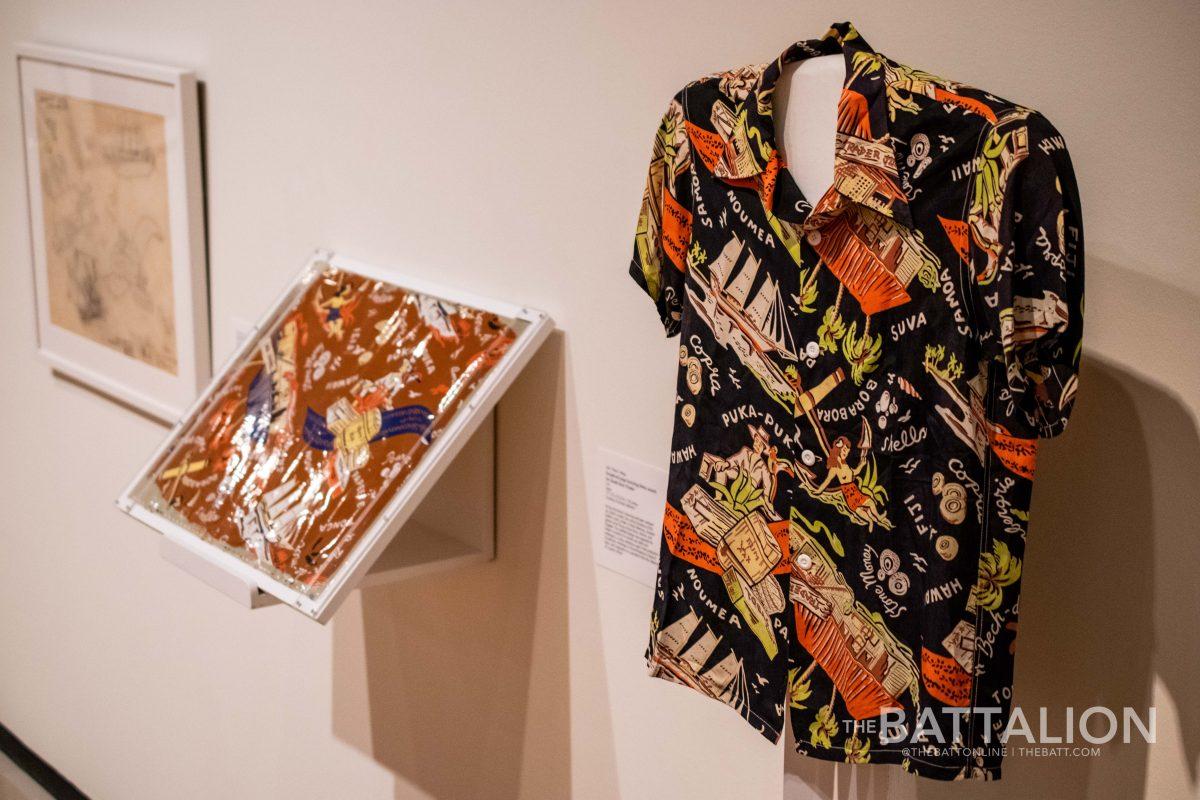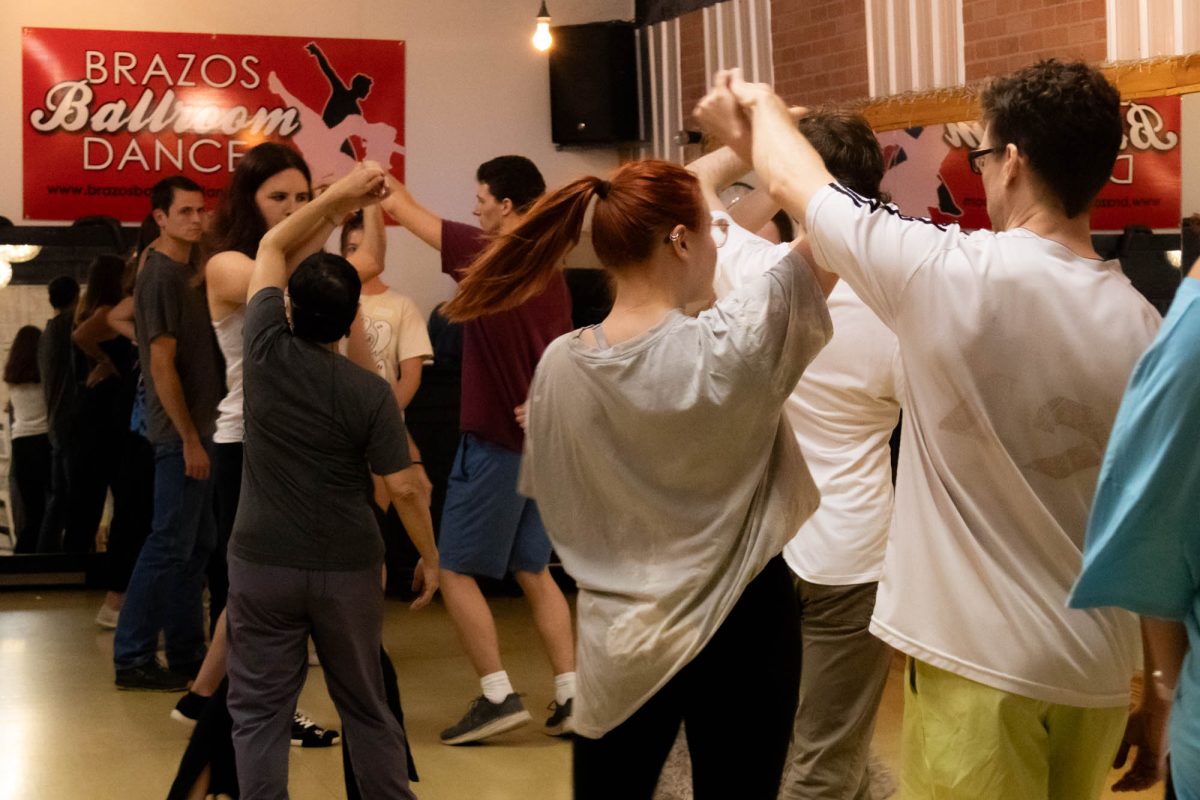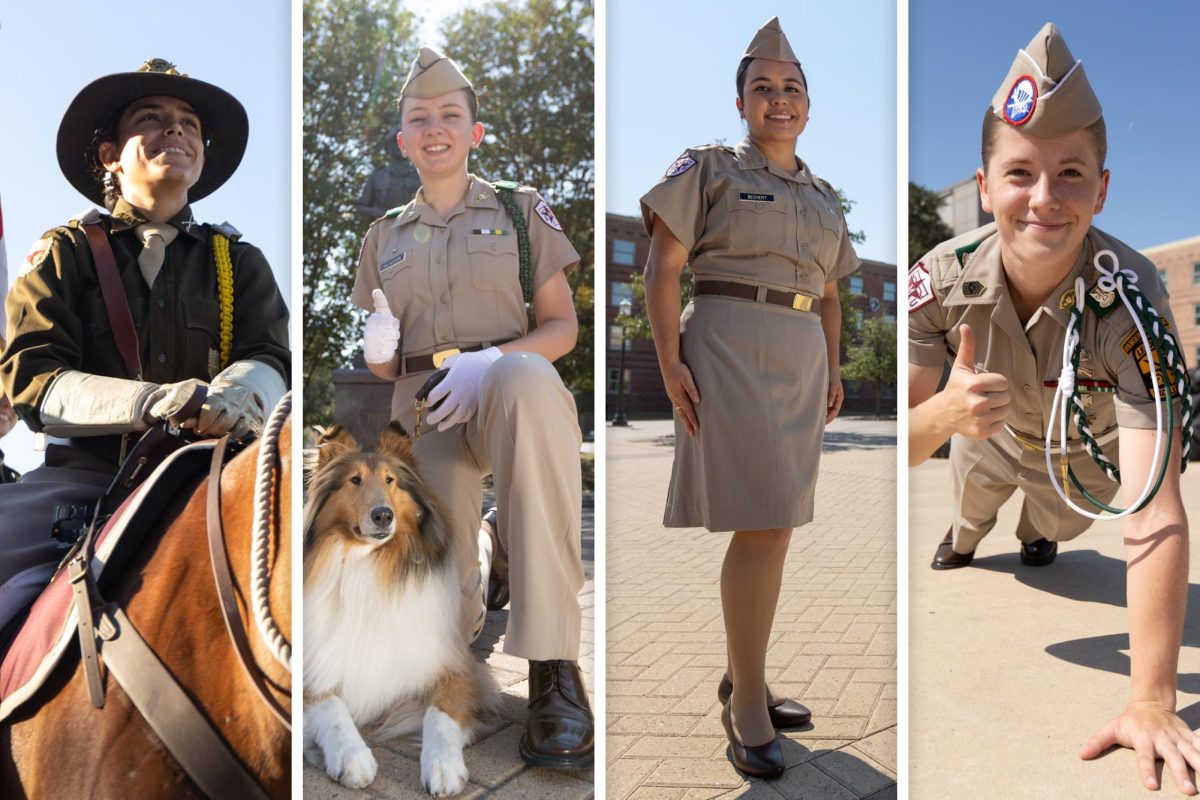The Hawaiian shirt has become a defining article in clothing and is now a dedicated centerpiece in the exhibition “Art of the Aloha Shirt: Keoni of Hawaii.”
The art exhibit, located at the Memorial Student Center in the J. Wayne Stark Galleries, will be available until March 22. It displays over 60 artifacts created by John Keoni Meigs, who is credited as the creator of the aloha shirt. This gallery embodies both the historical and cultural significance of this modern Hawaiian fashion statement.
Molly Painter, a marketing and communications specialist for the Texas A&M University Art Galleries, said “Art of the Aloha Shirt” follows the history behind Aloha shirts, which became popular in Hawaii as early as the 1930s.
“After World War II, tourism to Hawaii increased, and the people on the islands switched from work clothes to casual wear to welcome the tourists,” Painter said.
The gallery displays elaborate and vibrant Hawaiian shirts created by John Keoni Meigs, who designed over 300 pieces between 1938 and 1951.
“While we don’t know who actually invented the Aloha shirt, it’s safe to say John Meigs was a leading pioneer in this area,” Painter said. “This exhibition highlights [his] artistic career and his role in making the Aloha shirt the popular fashion icon it is today.”
As one of the viewers at the opening of the gallery, visualization freshman Tessa De La Fuente said she recognized the unique concept of the pieces within the exhibit.
“This isn’t something that is very traditionally shown in galleries because people don’t associate shirts as a form of art,” De La Fuente said. “Though art encompasses a lot of different things, and it can be anything.”
In addition to the Hawaiian shirts, the gallery exhibits behind-the-scenes pieces that show Meigs’ creative process prior to the the final product. Some of his design sketches and paintings are framed along the walls of the exhibition.
“In art we see a finished piece, but we don’t always know the back story,” Painter said. “By showing John Meigs’ original drawings and fabric swatches next to his finished shirts, visitors can get a glimpse into his mind and how he turned his visions into reality.”
Dale Rice, an instructional associate professor in the Department of Communication, said these artifacts allow the viewers to look at something so recognized from a different perspective.
“Everybody knows what a Hawaiian shirt is, so to see the designs and to see the way in which these shirts were crafted and how they fit into a particular history is interesting,” Rice said.
Although “Art of the Aloha Shirt” does not showcase the typical artistic media that people are accustomed to, Rice said the appreciation of the exhibit should not be undermined.
“A shirt is so familiar that it should pull you in and engage you right from the moment that you walk into that exhibit,” Rice said.
Rice said he encourages Texas A&M students and faculty members to observe the exhibition for themselves and take in the unique medium.
“It is a great place to have a good learning experience,” Rice said. “It’s for people who don’t stop to think about going to an art gallery, to come in, and even if they only spend 10 minutes in one of the exhibits, it would be worth their while.”
Say ‘aloha’ to Texas A&M’s Hawaiian shirt exhibit
February 6, 2020
Photo by Photo by Paul Burke
Aloha Shirts
0
Donate to The Battalion
Your donation will support the student journalists of Texas A&M University - College Station. Your contribution will allow us to purchase equipment and cover our annual website hosting costs.








